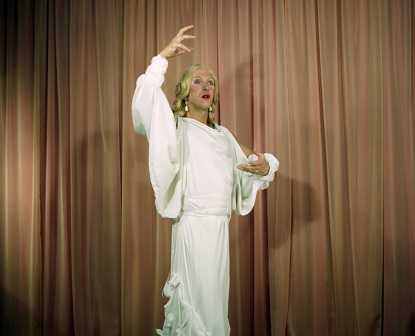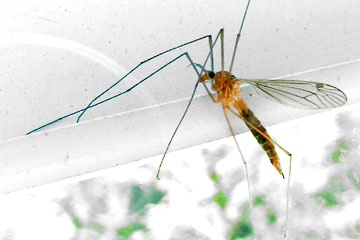Hopscotch- Branka Bencic, Curator
December 20th, 2007 – January 10th, 2008.
Gallery MC, New York
HOP – SCOTCH
Exhibiting artists: Alen Floričić, Fulvio Juričić, Davor Kliman, Robert Pauletta, Robert Sošić, Olja Stipanović, Bojan Šumonja
Curated by: Branka Benčić
Hopscotch offers the audience a possible way of looking and walking through the exhibition. As children’s game draws possible paths on the floor, the exhibition draws its fragmentary structures as spatial strategies of connecting different works and individual aesthetic positions. Jumping from one to another, next or above, returning, missing, crossing, jumping over…
Once before I have used the exhibition-making strategy from literature, exploiting a literary model, its structure, transferring it to both, the exhibition’s concept, selection of works and its spatial organization, it’s installation. It was from If on a Winter’s Night a Traveler (Se una notte d’inverno un viaggiatore) by Italian novelist Italo Calvino. This time Hopscotch by Julio Cortasar offered an interesting angle we could place artworks with. A system or structure is what holds exhibition together. The inner logic emerged later.
The exhibition merges diverse artistic production and strategies by several artists that live in a closely defined geographic area – region of Istria in Croatia and is trying to avoid stereotype notions of East European art, avoiding the reduction of represented art practices to a (national, sub-national) common denominator, showing its specific translocal character and a way to function as „open work“.
Constructed by means of language and representation, identities are not a stable unity of consciousness, but a changing thread of ideological positions built as a temporary meeting point of subjects and codes on the crossroads of different social formations and personal histories. Artists critically investigate questions on individual and collective existence and indicate personal or social commentaries in the background of our common daily lives. By diverse strategies artists create an individual language as well as context and environment for the artwork, establishing relationships towards artistic, institutional and non-institutional context, showing the symbolic capital of society’s fetishes and values. Through structures of fragments, repetition and montage they represent a subjective fragmented mosaic structure of the world, display banal everyday activities that by slipping signifiers took a critical position spiced with irony and humor.
Alen Floričić exploits self -referential representation where he places his own body as the basic motive, while at the same time questioning the technical possibilities of digital image manipulation. Put on an abstract nonrepresentational black background, Floričić’s silhouette is an icon, a sign, a paradigmatic example that points to the disturbing space between the physical and imaginary, human conditions, existential preoccupations and anxieties. Media manipulation and multiplication demonstrate the unstable character of our fragmented identities that are rhythmically orchestrated close to a “visual stuttering”, found in early film or earlier in chronophotographs by Muybridge or Marey. In these flickering scenes and broken images we spot the artificial and constructed character of the movement that underscores fractures in the social body.
Choose Your Game by Davor Kliman is of a documentation character. In this photo-documentation of intervention, in the form of a site-specific installation, the author almost through a “referendum-like” drawing on the floor asks questions, i.e. offers two possible answers. Through an act of artistic and social provocation he integrates several ideas – juxtaposing the idea of a children’s game with a dangerous one, which, as it is suggested here, frequently has a fatal outcome. Two drawings on the floor can be a part of everyday life and reality. One represents squares indicating a children’s game “Hopscotch” , the other one presents the contours of a life-size human figure in a lying position, which fortunately we do not come across so often in our immediate surrounding and reality, but in detective and CSI series.
Walking, a photo series by Olja Stipanović is a mapping of daily routes. The photographs represent author’s foot stepping out on various kinds of urban surfaces. The attention is directed to a daily activity of walking in the labyrinth of the city and drowning in the crowd, as the process of the pedestrian’s adopting of the topographic experience. The author documents traces of her own movements, tells a story imprinting her body into the physical body of the city and its spiritual, social and imaginary context, awakening the consciousness of a routine activity as a signifying practice. Her works are self-referential questioning of artist’s own subjectivity and the position of his/her own visibility.
The performance Sleeper by Robert Sošić, presented for the first time in the Regional Museum of Rovinj, both as a performance and photograph, raises many issues – on art, art institutions, home town and its local art collection, the concept of fine arts (beaux arts), the consolation brought by the works of art or feelings they arouse, as well as the position of traditional painting, old masters and contemporary art. The photograph, functioning as an independent work that developed as a documentation of performance is a meta-referential work, which although it refers to the position and institution of Art, I prefer to perceive as a projection of a utopian and optimistic endeavor.
In the series of new works, that are almost considered as objects not only images or paintings Fulvio Juričić elaborates an individual system of signs in which the information is on the verge of semantic noise. Compositions of a reduced dark color, almost monochromes, communicate closely with the context of art informel and we can also find out certain contiguity with the minimalist movement. By conceptualizing the method of reduction and repetition, discrete moves and graphic contrasts pointing out the uniqueness of the multi-layer structure of each work, the authors creates both rhythm and change in repetitiveness.
The paintings of Bojan Šumonja and Robert Pauletta speak in favor of the actualization of figurative art. Their artistic expression is eclectic, imbued with respect for painting tradition. There is a wide variety of interest, ranging from expressive figuration, references and quotations from visual culture in general, literature, local traditions, to impulses from the immediate surroundings, details from everyday life, and also reaching out for post-modern means and procedures – irony, paraphrase, pastiche, kitsch, triviality, riddle, game…
Robert Pauletta’s cycle Pittura nera focuses on the genre of self-portrait. The works from the cycle Pittura nera present a series of variants, mostly double self-portraits, in which above the desire to present his image faithfully, as a motif at a certain level of reality and authenticity of presentation, the author aims at presenting the state – duality and anxiety of the de-centered subject. The painting is as a multi-layered system and work, the text is intended for reading and “interpreting” layers of meaning, and in the self-portrait the painter is both the author and model, subject and object, I myself and Alter ego.
The painting Sheep by Bojan Šumonja resembles some kind of inverted, amazing allegory. The flock of sheep, as the only motif of the work, floods the entire surface of the canvas. In the perspective of close and expressed foreground it seems as if the sheep will slip off the edge of the painting and the chosen colors summon up the effect of negative, and black and white photography. Such an effect of contrasting black and white, white fleece and black shadow, also present in black and white photography, puts an end to this idyllic scene of animals in a pastoral setting, thus creating an atmosphere of slight anxiety and uneasiness, insecurity and uncertainty, giving a meaning to the saying “the lost sheep”.
Branka Benčić
Also Showing:
Locating Identity:
Young Croatian Video Artists
[works 2000 – 2006]
Artists and videos:
Tanja Dabo Welcome; Matija Debeljuh La cantina Di Ferro, Alen Floričić Untitled, Nicole Hewitt Waltz, Ana Hušman Merzšpajz, Plac; Lala Raščić 17 Stories; Goran Škofić Pilot
[Total running time 60 min]
Selected and curated by Branka Benčić



